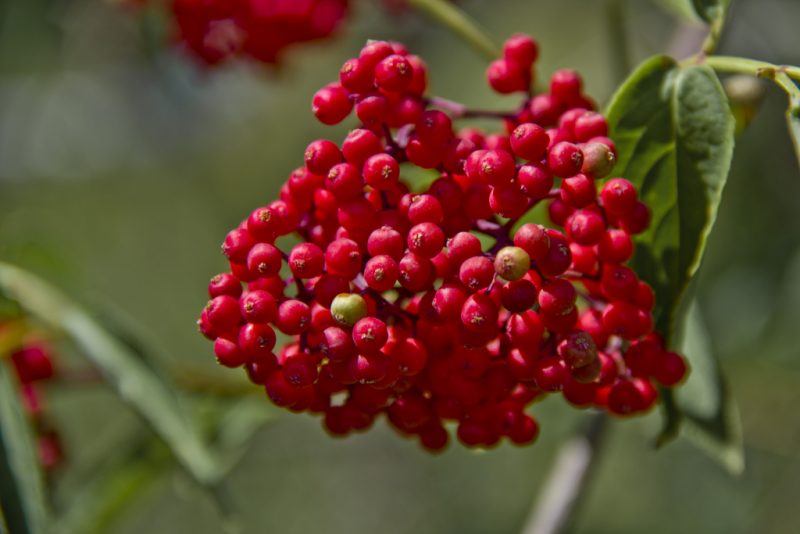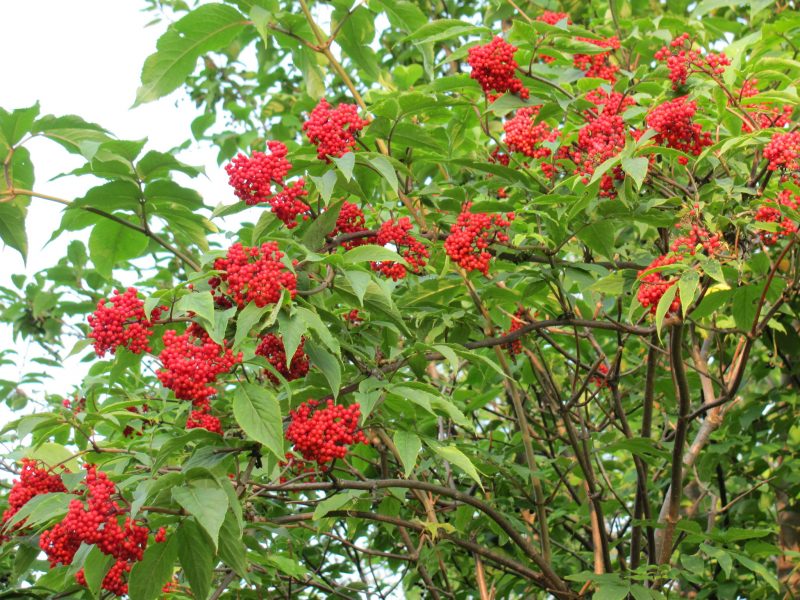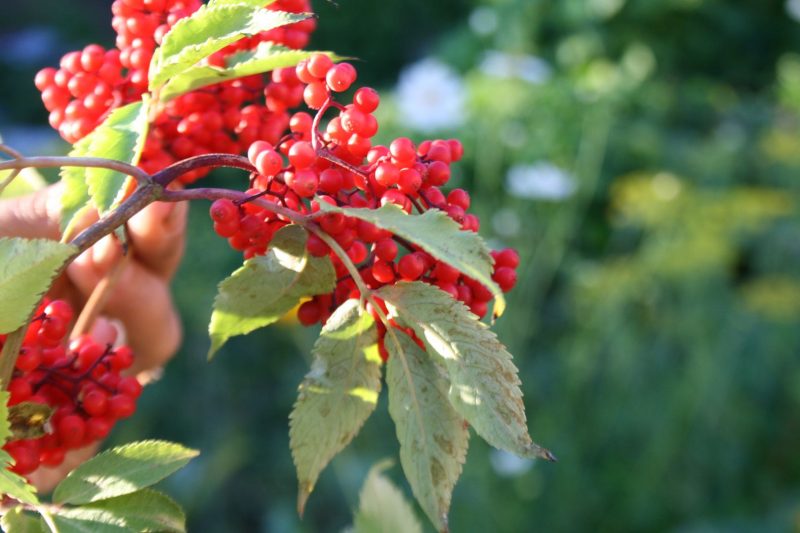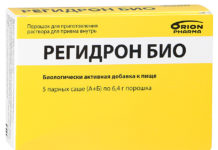Elderberry red looks especially beautiful in September and October, attracting attention with large clusters of bright scarlet berries. This deciduous shrub can sometimes grow in the form of a small tree. It is distributed throughout Eurasia and North America, where it is found both in the wild and in cultural forms as a decorative foliage plant in parks and gardens. Often used elderberry for landscaping cities.
Material Content:
Description and chemical composition of red elderberry
Plant height can vary from 1.5 to 3 m, depending on the region of growth and weather conditions.

External characteristics:
- direct highly branched stems with a rough bark to a white point;
- leaves with a jagged edge of an oblong shape of a saturated dark emerald color, while young leaves can be crimson;
- snow-white flowers, collected in large inflorescences, with a specific smell;
- Scarlet fruits with an unpleasant taste.
In official medicine, the plant is not used, therefore, serious laboratory tests of its composition do not exist.
However, as a result of a few amateur tests, the following substances were found in the composition of elderberry:
- essential oils;
- vitamin C;
- tannins;
- organic acids;
- various toxic substances.
Because of this, it should be used as a medicine very carefully, in no case exceeding the recommended dose.
Red elderberry: edible or not
Red elderberry is not considered highly toxic, so it is even used in cooking.

There are fruits that have not undergone heat treatment, is strictly prohibited.
You need to know how to cook these berries in order to avoid digestive upsets and other side effects, and use them only in limited quantities. An overdose of elderberry medicines or consuming berries in large quantities can lead to poisoning.
Symptoms of poisoning:
- headache;
- dizziness;
- nausea, vomiting, diarrhea with white discharge;
- suffocation;
- sore throat and nasal cough;
- stomach ache;
- increased heart rate;
- dyspnea;
- white spots on hands and face.
In severe cases, even cramps can occur. If timely assistance is not provided to the patient, death may occur due to acute pulmonary and heart failure. You need to immediately call an ambulance, and in anticipation of her arrival, give the victim activated charcoal or Enterosgel.
Useful and healing properties of elderberry in medicine
The healing properties and contraindications of this plant were first discussed in the Middle Ages. Since then, healers of alternative medicine widely use its inflorescences, fruits and roots for the treatment of various diseases.

The correct use of elderberry-based traditional medicines helps:
- remove fever and fever;
- lower blood sugar;
- normalize metabolism;
- remove puffiness;
- cope with inflammation;
- to heal wounds.
Medicinal raw materials can be prepared independently. The last weeks of spring and the first 2 weeks of June are the best time to collect and harvest leaves and flowers. The fruits must be harvested after they have fully ripened at the end of summer. Raw materials are carefully sorted and placed for drying in a dark and well-ventilated room. The finished product is best stored in fabric bags.
In the treatment of which diseases does the plant help
People have long known about the ability of plants to lower temperatures. Thanks to its diaphoretic action, it quickly removes heat and helps the body clear itself of harmful waste from viruses.

Also, the plant quickly cures inflammatory processes in the throat and oral cavity. Rinsing with infusions and decoctions helps to quickly remove inflammation, stop pain and destroy pathogens.
Elderberry has a strong emetic and laxative effect, so it is often used to quickly cleanse the intestines from toxic substances. It stimulates intestinal motility and irritates the walls of the stomach, contributing to effective cleansing.
Also, decoctions and infusions from elderberry are often used externally for the treatment of heel spurs, arthritis and arthrosis. Such compresses relieve pain, remove the inflammatory process, slow the progression of the disease and help the joints recover faster.
In addition, plant-based preparations help:
- relieve swelling due to a pronounced diuretic effect;
- sputum in asthma;
- prevent the development of hormonal disorders during menopause;
- fight with various evil and benign formations.
There is no official confirmation of the last point, but traditional healers often use elderberry as part of the complex treatment of just such cases.
Health Recipes
The beneficial properties of berries, flowers and leaves make it possible to use them for various diseases.

Of the recipes of traditional medicine, the following should be mentioned:
- From joint diseases. Collect ripe berries and fill them with a glass jar (with a capacity of 1 liter) by about ¾ of its volume. Then top up the contents of the container with alcohol, cover with a lid and put in a dark but warm place for 30 days. From time to time, the container needs to be shaken vigorously. Strain and use the finished medicine for compresses and rubbing 3-4 times a day.
- With angina and stomatitis. 1 tbsp. l dried fruit pour 200 ml of boiling water and cook over low heat for 6 minutes. Cool, strain and use for rinsing.
- For colds and coughs. 2 tspdried inflorescences pour 200 ml of boiling water, leave for 12 minutes and strain. Drink during the day, dividing this amount into 2 doses of 100 ml. You need to drink in small sips, without rushing.
- Menopause. Pour the flowers with vodka in a ratio of 1 to 5. Insist for 2 weeks, strain and take 90 drops per day, dividing them into 3 doses. Improvement in general condition is noted after the first days of admission.
How to use red elderberry
From the ripe fruits of this shrub, you can cook jelly, which is then used as a laxative. Freshly squeezed and boiled with sugar juice is used to prevent various diseases. From berries, you can prepare useful preparations for the winter - jam, mashed potatoes or jams, using them later as medicines.

However, nevertheless, officially elderberry is considered low-edible and even slightly toxic, so you need to use them in cooking very carefully.
Contraindications

The list is very short and includes only three items:
- age up to 14 years;
- the period of gestation and lactation;
- allergy.
For all other categories of people, the use of elderberry for medicinal purposes and in strictly limited doses does not do any harm.
It is better to use elderberry for treatment under the supervision of a phytotherapist who will help determine the required dosage and give advice on taking this natural medicine.












